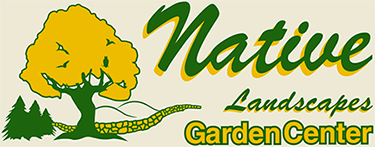On October 29th, around noon, it began to snow. By three that afternoon, almost six inches had accumulated and it began to snow harder. It was a heavy, wet snow so limbs began breaking and power lines started to fall. By midnight, the heavy snow was tapering and our area had received fourteen to twenty three inches. It looked like a war zone with trees, branches and electric poles snapped and down everywhere. On Sunday, the clean up began.
What was unusual about this storm was how fast the snow accumulated on the very warm ground. The dense snow fell heavily and contained a very high water content. If this storm had been all rain, we would have received four inches of rain. Most of the damage occurred at lower elevations where the snow was the wettest and the trees still had more leaves. The landscape was massacred in many areas.
I did some research to see what trees were hardest hit. The trees most damaged were deciduous trees that hold on to their leaves later into the fall season. The trees incurring most damage were the Norway maples and Bradford pears. In fact, Dalton Farm in Poughquag lost every one of their Bradford pears in the landscape. My findings were that native species faired better than exotic species. In all fairness, there was also damage to some weak crouched native species. However, for the most part, our natives held up better and non-natives were more heavily damaged.
This storm was reminiscent of the October 4, 1987 storm that dropped about a foot of heavy wet snow. There are some distinct differences between these two storms. The 1987 storm was more localized and occurred earlier in the month. The trees were still in their summer green canopy and the damage was much more severe in our area. The damage from the ’87 storm was primarily confined to the Hudson highlands and the Berkshires. This year’s Halloween storm was more wide spread. A storm we will not soon forget.
As November turns into December, we begin to focus on keeping warm. Out of the hope chest comes the red union suit, wool socks and mittens. Mittens are much warmer than single finger gloves. By keeping our fingers together in one mitt, it helps prevent frost bite when the temperature drops below zero. Keeping our toes warm is just as important as fingers. Stay away from steel toe boots and go with a heavy insulated boot with traction. If your fingers and toes start to burn from cold, keep them moving. Steady blood flow from movement will prevent frost bite.
The landscape is as different now as it was in early October. Plants such as winterberry, partridge berry, running pine, mountain laurel, sycamore and Christmas fern have a uniqueness and stand out in the winter landscape. It’s time to mulch the garden just as the ground freezes with a mix of native composted roots, leaf mold, shredded bark and chips. Begin pruning the landscape now in preparation for future growth and structure. Don’t be too tidy in the garden. We need to leave some seed heads for the hungry critters.
December is the start of winter. As a kid, I remember winter being my favorite season; following animal tracts in the snowy woods, sleigh riding on the backyard hills, all day hockey out on Wolf Lake, and making a few bucks shoveling neighborhood walkways. Winter has become more of a chore these days. I wonder if it’s age or attitude? I’ll give that a bit more thought during the next blizzard.
It’s December, the holiday season. Hooray! A time to give thanks and praise. Tradition is this year’s theme for me and my family. Simple and festive, where less is more. A gift from the heart, not the pocketbook. Where faith and trust in one another will help us through another season. May the festival of peace, hope and understanding be wrapped under your tree this special season. Happy holidays!
